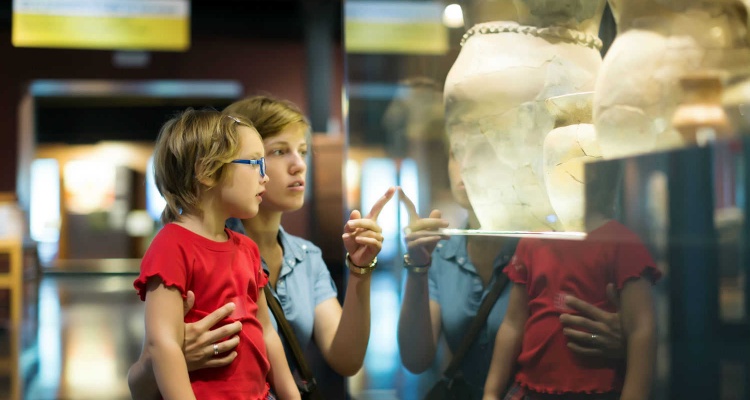We hate to admit it, but there are some people who actually think that museums are boring. It seems that the whole idea of organizing a quiet place to learn and see first-hand the most valuable art and artifacts of history just doesn’t appeal to everyone. But there are museums that refuse to be stuffy, dull… Or even centered around subject matters that have been proven to exist. Seriously, what’s more fun than a place dedicated (often with a sense of humor) to a monstrous urban legend?
So if you’re looking for a “fun” museum to check out, here are six very real and entertaining museums about mythical and legendary creatures.
International Cryptozoology Museum – Portland, Maine
According to the International Cryptozoology Museum’s website, Cryptozoology is “the study of hidden or unknown animals” and “one of the newest life sciences.” But the scientific community views it as nothing more than a pseudoscience. For the most part, self-proclaimed “cryptozoologists” hunt for evidence to prove that creatures like Bigfoot or the Loch Ness Monster are real. And the ICM is dedicated to preserving the history of those searches and sharing them with the public through exhibits, displays, possible evidence, and artist renderings of creatures. The museum, which is currently in the process of moving, reopens on 1 July.
Bigfoot Discovery Project – Felton, California
Bigfoot, the legendary bipedal simian that somehow populates North America but has never been proven to exist, is often chalked up to a mix of folklore, hoax, and witness confusion (bear or Bigfoot?). For over ten years, the Bigfoot Discovery Project in northern California, not far from Bigfoot’s home turf, has been open to visitors interested in the legendary hairy beast. The attraction is dedicated to displaying a history of the creature’s sightings, as well as its pop culture prominence.
Interested in listening to Bigfoot’s favorite tunes? Check out our piece on the Sasquatch Music Festival in Central Washington.
The Mothman Museum – Point Pleasant, West Virginia
From late 1967 to late 1968, the West Virginia town of Point Pleasant was home to a series of sightings of a flying man-like creature with ten-foot wings and glowing red eyes. The incidents gained national attention and an ensuing book, which inspired a 2002 movie starring Richard Gere (The Mothman Prophecies) somehow tied the creature to the collapse of a nearby bridge that killed over 40 people. Visitors can learn more about the Mothman and the resulting pop culture effect at the Mothman Museum in Point Pleasant, which is also home to an annual festival about the legend every September.
Expedition: Bigfoot! (Sasquatch Museum) – Cherry Log, Georgia
Like the Bigfoot Discovery Project in California, Georgia’s Expedition: Bigfoot is a museum dedicated to the monster’s history and profile, but in a larger space and with a dedication more to investigating Bigfoot and raising public awareness to help find evidence that Bigfoot exists. It’s also easier to visit for Bigfoot fans that can’t make it to the West Coast.
Rhinelander Logging Museum (Home of the Hodag) – Rhinelander, Wisconsin
Equal part folklore and tongue-in-cheek hoax, the Hodag was first reported in 1893 by a Wisconsin resident Eugene Shepard in the woods just outside of the town of Rhinelander. Shepard suspiciously blew up the first Hodag with dynamite, but was able to “capture” one the next year and bring it to the town fair… With much press and fanfare. Rhinelander has since adopted the animal whose features include “the head of a frog, the grinning face of a giant elephant, thick short legs set off by huge claws, the back of a dinosaur, and a long tail with spears at the end” as its mascot. Hodag statues and banners can be found throughout the community. But if you want to get the best lowdown on the Hodag head to the Rhinelander Logging Museum.
Skunk Ape Research Headquarters – Ochopee, Florida
Besides calling the Florida Everglades home, the big difference between the skunk ape and Bigfoot is the smell, hence the name. Visitors can learn all about skunk apes, along with suggestions on where in the nearby Big Cypress National Preserve one might be spotted at the Skunk Ape Research Headquarters, founded and run by Shealy brothers–who also own and run the Trail Lakes Campground, where the museum is located and which hosts a couple annual skunk ape festivals
Have you ever spotted a mythical creature in its natural habitat? Let’s talk about it in the comments below!

